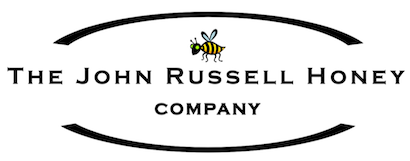December Fireside

Snow can be a beekeeper’s best friend: we wrap our bee colonies with well insulated wraps to help give them an extra edge in regulating internal hive temperatures as thermometers continue to dip, and their home becomes cooler and cooler. Wild bees, naturally, exist without our help in this regard, but it’s our job to support our own (semi) domesticated bees anyway we are able. Snow fall adds to our insulating efforts, and a colony completely buried will still thrive underneath their blanket of snow.
Some beekeepers winter colonies indoors in large buildings where the temperature and humidity are controlled. Others choose to winter outdoors and rely on the bees own natural regulatory behaviors to get them through.
Both techniques have their advantages and disadvantages, but it comes down to preference moreso than one method being better than the other.
Some may be surprised to learn that bees don’t hibernate, but instead slow their activities toward a more dormant state. They will cluster in a tight group, and move slowly along the combs of honey, consuming what they need as they need it. When the bees on the outside of the cluster get too chilled, they will move toward the center of the mass. Likewise, the bees that become too warm will move to the outside so that this convection mass of bees is generally pretty constant through the colder weather. The bees will generate their own body heat by "thrumming", or shivering their flight muscles (just like you and I would rub our hands together!)
During breaks in the coolest weather, especially in the spring, the cluster may move around more freely and relocate to fresh frames of honey and pollen. Bees wintered indoors are kept at 4 or 5 degrees Celsius to keep them from being too active, but have more mobility as they don’t need to deal with the extreme cold temperatures.
There may be a few calendar days where the queen does not lay any eggs at all, but although her output will be extremely reduced, the colony usually maintains a very small patch of brood. Egg laying is determined by the bees’ instinctive internal clock, the amount of daylight (whether it is pre or post solstice or equinox) and the presence of incoming resources.
So, in the winter when the winter solstice passes, there is an instinctual switch that engages a very gradual increase of brood production. When spring finally arrives (woohoo!) and fresh pollen is available, the laying shifts into a higher gear and the colony knows that it can support greater numbers. However, between the very last blooms in October, to the new poplar and willow bloom in spring, whatever they were able to collect prior to October is what they will have to make do with. As long as there are calories available, the bees can eat and heat the space they are occupying.
For the colony, running out of honey is similar to your car running out of fuel. Everything stops, and the result will lead to bees perishing very rapidly.
Unlike the bees, the beekeeper has a bit more on the to-do list in the winter months. Cleaning and repairing the hive bodies and associated equipment. Making and waxing frames, and getting the crop sold to fund the next season.
Next month (for those who are really interested in the nitty gritty!) I’ll go into some real world methods on how we check on our hives in the dead of winter, and the newer technologies we use.
As always, if you have any bee or honey related questions, don’t be shy! You can email me or give me a call anytime.
Also, please note that with Christmas around the corner, we have resumed our yearly Christmas Cheer Board mixed case fundraiser program.
$5.00 from every case is donated to the Christmas cheer board, and we add $10.00 on top of that to total a $15.00 donation every time one is purchased. With the holidays, people can buy mixed cases to give jars out as small gifts to co-workers, friends and family members. If this sounds like you, consider helping us help the Cheer Board put food on tables while putting food on the tables of those near to you at the same time! The need has never been greater than it is now.
Don't forget: winter time is baking time! Do you have a favourite recipe that contains honey? Send it in!
I’ll try it out and share it out with the family. If you get a collective thumbs up, we will put it in the next newsletter and gift you a basket full of John Russell honey and other Products from the Hive.
Lastly, I wish everyone out there a happy holiday season, and a very Merry Christmas or whatever is the case in your household 🎄 We will send out another newsletter in January, so please feel free to let us know what you'd like to hear more about (especially anything relating to mead!)
Warmest regards,
